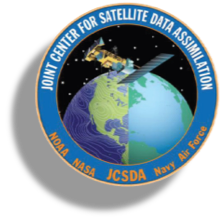3rd JEDI Academy
Boulder, CO
June 10-13, 2019
Meeting website with links to the schedule, presentations, and tutorial materials.
The 3rd JEDI Academy was held this past week in Boulder, Colorado from June 10–13, 2019. The JEDI Academy is a tutorial held to act as a training session for those working on the Joint Effort for Data assimilation Integration (JEDI) utilized by JCSDA and affiliated partners focused on producing more accurate forecasting predictions. The JEDI coding framework utilizes standard interfaces between models and observations to create a unified data assimilation system. JEDI incorporates coupled model systems, unified observation (forward) operators (UFO), research to operation strategies (R2O/O2R), and a collaborative, innovative effort amongst team members and the scientific community.
The academy offers attendees both lectures and practicums (hands-on practice) to familiarize employees and affiliates with the JEDI system, discuss updates, and work collaboratively on improving the framework. Several members of the JEDI team gave detailed lectures in the mornings, with practicum work following in the afternoons. About 40 participants attended from affiliated institutions; turnout and engagement were at an all-time high. The consensus from the crowd was that the academy has gotten progressively more refined from when it was first held in June of 2018.
Dr. Yannick Trémolet, JEDI Project Lead, kicked off the academy with a talk introducing the importance of the Object-Oriented Prediction System (OOPS) and JEDI design for improved forecasting.
Some of the other lecturers and topics were as follows:
Steve Herbener reviewed features of Interface for Observation Data Access (IODA) which helps to isolate code from data storage.
Dr. Mark Miesch discussed his work on portability, containers (virtual environments to help run OOPS more efficiently on remote machines), and collaboration tools.
Dr. Anna Shlyaeva talked about the various aspects of integrating observations in OOPS to make a model-agnostic interface.
Dr. Dan Holdaway used the FV3 (GFS – NOAA, GEOS – NASA) forecasting model as an example to discuss how model interfacing works with OOPS.
Dr. Maryam Abdi-Oskouei talked about various modes of testing within JEDI.
Dr. Travis Sluka highlighted marine applications of OOPS models.
In the afternoon, participants got some hands-on practice working with JEDI code by running the framework to assess outputs with small modifications to variables. Most coding modules tied directly back to concepts covered in the morning lectures for that day.
Ultimately, the goal for JCSDA and the JEDI project is to create usable, open-source JEDI code that can be utilized by academics and engineers alike. We are hopeful to refine the JEDI Academy to a point where these training sessions can be emulated within the community and at universities to provide students with an outlet to develop their practical coding skills. It’s safe to say that JCSDA is leading the charge for innovative forecasting, and the JEDI framework is a key component.

